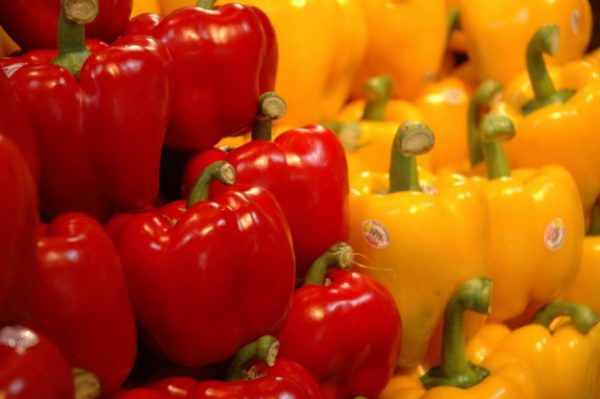
Varieties of large thick-walled pepper invariably attract the attention of gardeners, because the main thing in pepper is its taste and juicy tasty pulp, which is hidden under the skin of the fruit. Nature has provided for the protection of seed from temperature effects and weather conditions.
Any vegetable grower, no matter what his experience in breeding fruit crops, prefers varieties of large thick-walled pepper. His description certainly includes productivity and taste. They depend not only on smell and taste, but also on juiciness and meatiness. It is these qualities that culture usually owes to the thickness of the walls. Among the most popular varieties, large-fruited species with thick and juicy walls around the seed block are invariably located.
Content
Thick-walled peppers - description
A characteristic feature of thick-walled peppers is that they practically do not differ from other varieties of this culture. They are also early ripe and mid-ripening, fruitful and not very. Some people like heat and moisture and in a temperate climate differentiate into greenhouse varieties, there are those that can be grown in open ground and in greenhouse conditions. The main difference between the varieties is that they belong to hybrids, the seeds of which must be purchased annually, or to the original varieties from which the seed material can be collected independently.
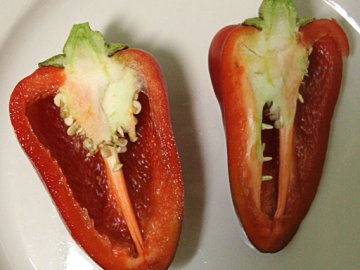
Not only hybrids appeared with improved indicators of productivity or thick-walled, but also plants of uncharacteristic flowers. Often you can see black, purple chocolate and other peppers.
Vegetable growers with experience recommend, when buying seeds, to carefully study the characteristics of the variety that are indicated by the agricultural firm or originator. Typically, the output indicates the millimeter wall thickness of the seed that is being offered for dilution.
In the description of the variety, the emphasis is not on plant seeds, which continue the life of an annual crop, but on the thickness of the fruit walls and the yield that can be obtained from the bush. But the reviews of those who are engaged in the cultivation of sweet bell pepper invariably include the resulting wall thickness.
Grade characteristics
Thick-walled are varieties in which the thickness of the pericarp begins from 7-8 mm. This is the only category that is highlighted in order to distinguish peppers by characteristic. Everything else they have can be completely different, starting from hybridity or originality, and ending with color. Most peppers with a significant thickness of pericarp are hybrids.
The main purpose of their selection was to improve certain indicators, including disease resistance, the ability to give a good crop or show excellent taste. It is believed that standard hybrid varieties, especially those grown in a greenhouse, are inferior in taste and aroma to simple peppers grown in natural conditions.
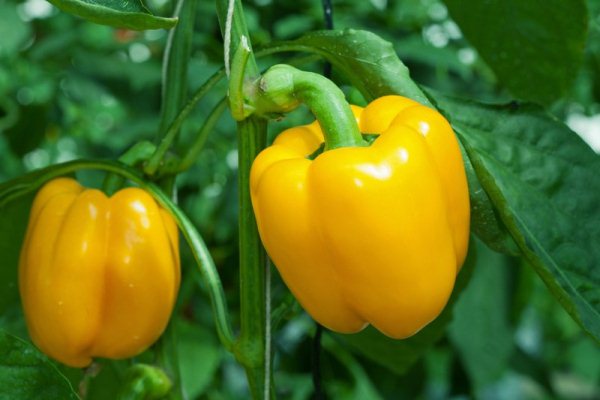
For reference! This is not entirely true, because modern hybrid peppers, bred by hybridization, are often not only good and unique in taste, but also contain more vitamins, juicier and flesher than simple, unencumbered varieties and, moreover, give much more high yield.
The properties
Thick-walled peppers can be any color. The most common peppers are:
- reds;
- yellow;
- orange
- tangerine;
- Chocolate
- purple
- brown;
- white
- lilac and even two-and three-color.
They can ripen at different times, grown only in a greenhouse or under a film or only in open ground, in the south and even in areas of problem farming. Such varieties are usually considered suitable for cooking any dishes, cold and hot snacks. At the same time, large-fruited ones prefer to preserve in cut form and as part of delicious canned vegetables, and those smaller ones are salted or fermented in barrels.
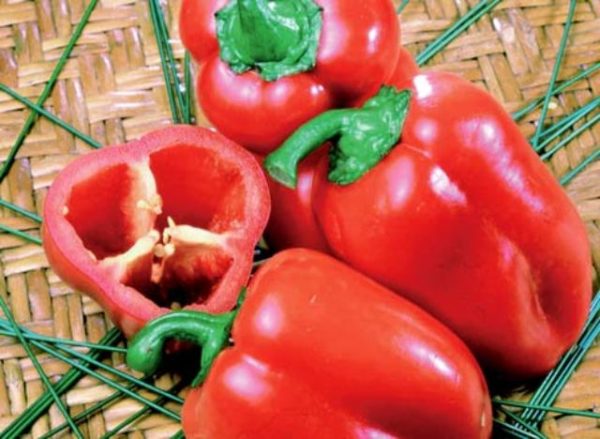
Advice! The optimal variety for cultivation should be selected not only for climatic or regional reasons, but also for color preferences, which usually indicate the predominance of some useful components. Important in this regard is the determination of the optimal time for breeding, and the height and leafiness of the bush, which affect the time spent, requiring special garters or distribution to trellises.
The best varieties of thick-walled pepper
In fact, there are many varieties with excellent indicators that are not included in the selected list, and are not described, because this would require too much time and space. The varieties below are just an attempt to demonstrate variety variety and the ability for each grower to choose a variety that suits him according to certain specific indicators.
Alba An early ripe variety from Moldovan breeders that tolerates heat even with moderate watering. Fruits with walls from 7 mm, medium size (from 100 g), white-yellow in technical ripeness, dark red - in full. Stably gives from 8 kg per sq. m, with skillful agricultural techniques, the fruits grow to 200 g, and the volume of the crop increases.
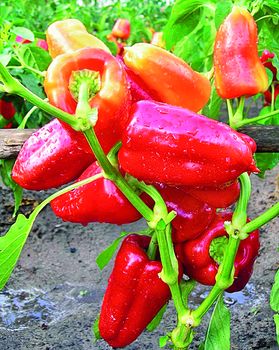
Atlant. A very popular variety in which the wall thickness can reach 11 mm. But the red fruit itself is of unusual size, up to 23 cm long. At the same time, the variety has a distinct pepper taste and stably high yields.
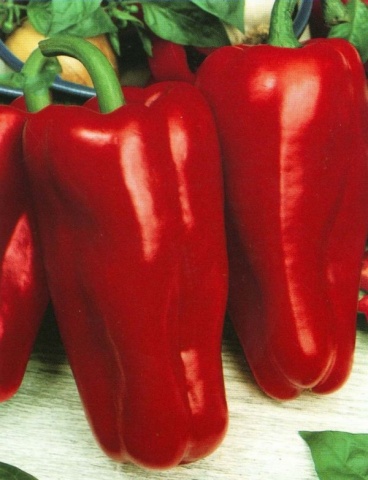
Bel Goy. A rare large-fruited late ripe variety, the fruits of which reach 400-500 g, but the yield is small, because a lot of fruits do not fit on the bush. bush up to 1.5 m in height, unpretentious in care. The color of the fruit is brownish red with yellow tints, the walls of the fruit are thick, the taste quality is simply excellent.
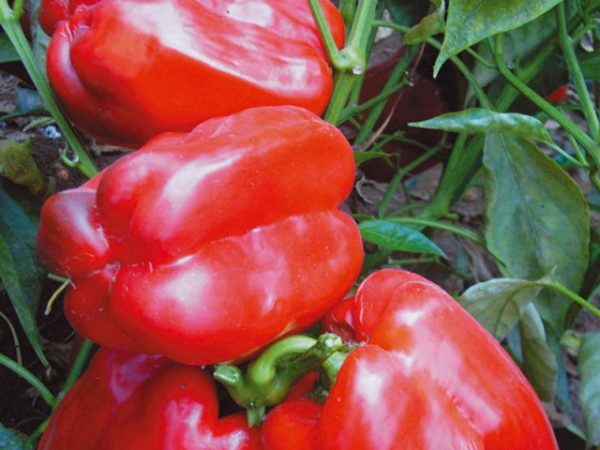
Interesting! According to gardeners, Bel Goy seeds can be purchased only in large seed supermarkets, and it is very difficult to find them in the market. You should only buy packaging from a trusted manufacturer, because in this variety the quality of seeds plays one of the main roles.
White gold. Pearl yellow cuboid pepper, medium early, weighing from 250 to 430 g, with an average wall thickness of 8-10 mm. It is easy to grow, has an original and pleasant taste, is suitable for canning. It is in high demand among buyers because of the excellent presentation and unusual color.
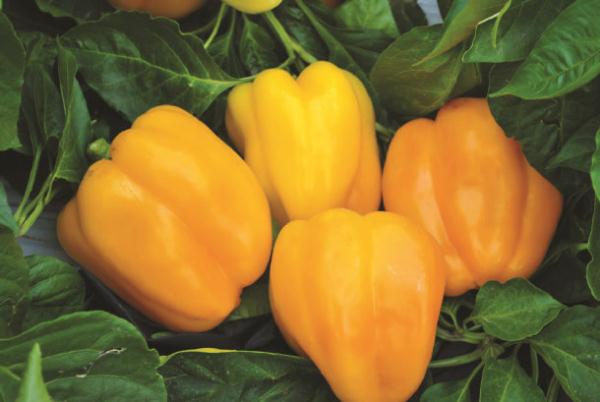
Belozerka. White pepper, which is removed in a state of technical ripeness, medium early with a distinct pepper taste, stably productive. Ripening for 110-115 days, the bushes are low, resistant to weather conditions and diseases.
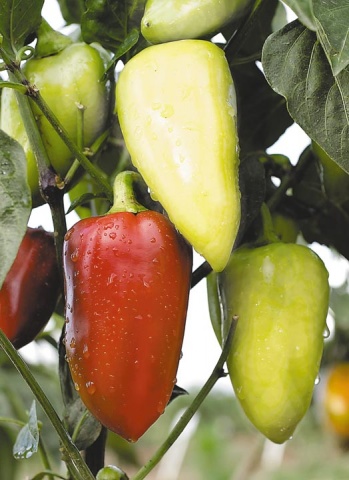
Blondie. A variety from Switzerland, from one of the largest seed producers in the world, fawn (white, but closer to greenish.It tolerates heat well, has excellent resistance to pests, is suitable in Russian conditions only for greenhouse breeding.

Cow's ear. Mid-season variety, fruits up to 200 g, dark green in a state of technical ripeness, red in full ripening. Resistant to all common diseases, fetal length up to 12 cm, the walls are relatively fleshy, from 7 mm.
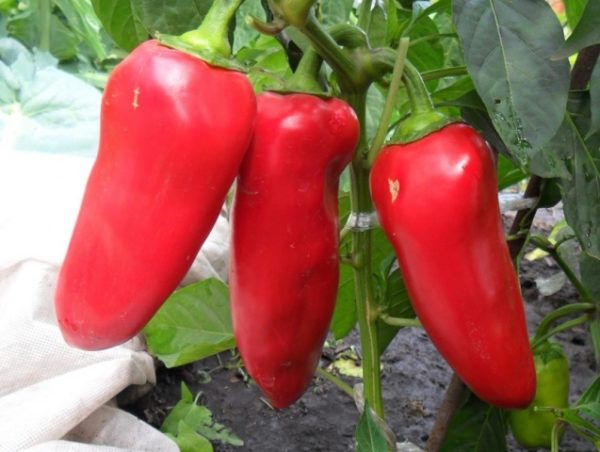
Hercules Harvest variety with excellent ability to lay and transport, resistant to common diseases, excellent taste in a state of technical ripeness, green, and fully ripened. It is considered a good option for preservation and freezing, the walls of the fruit are 8-10 mm thick. Unpretentious in care, the main requirement is a garter, so as not to damage the branches under the weight of the fruit.
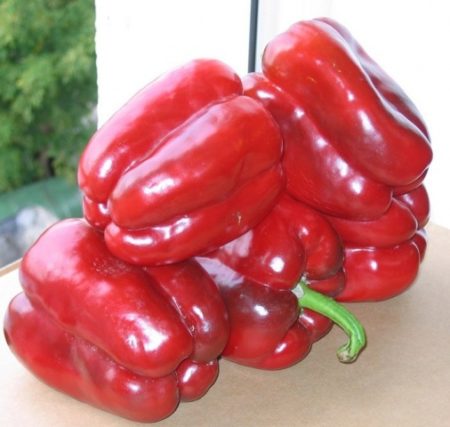
Denis. A common variety for growing in a greenhouse and in open ground, with a relatively high yield, stable and reliable. Seed material is always in demand due to its excellent taste. Ripens in 90 days, average fruit weight 400 g, walls 9 mm.
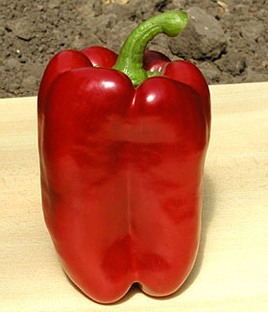
Red giant. Fruits are 250-300 in size, red in color, with a pericarp thickness of about 1 cm. The variety is suitable for both greenhouse cultivation and open ground. From 1 bush receive 2.5-3 kg, with the optimal planting scheme in 3-4 bushes per 1 square. m. Seedling planting time - 75 days from the time of sowing seeds.
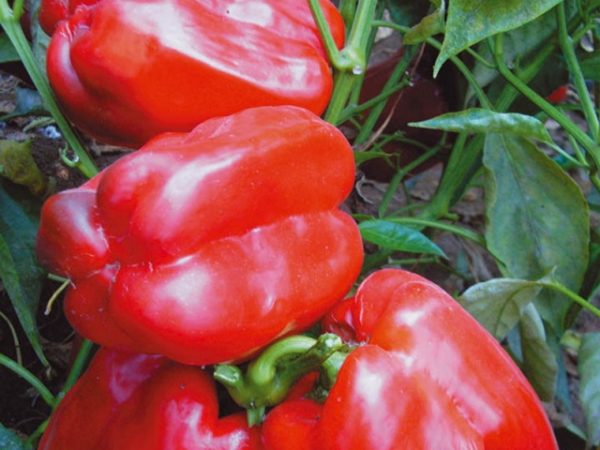
Siberian bonus. A undersized bush with large fruits, dark green in a state of technical ripeness and bright orange in full. The wall thickness is 1 cm, the fruits are juicy and delicate in taste, with a distinctly expressed pepper aroma. From 1 bush they remove 3 kg per sq.m. 6 bushes can grow.

Siberian format. A variety with huge fruits, on average about 500 g, with a wall of more than 20 mm and a length of 18-20 cm, if grown in greenhouse conditions. In open ground - 350-400 g, but the wall thickness is preserved. From the bush, you can get 3.5 kg, when placed on 1 square. m - 6 plants. The yield of the variety is simply excellent.
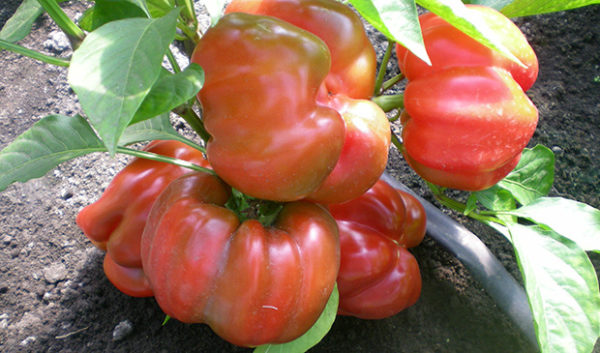
The sun of Italy. In many ratings, the variety is recognized as an excellent option for commercial cultivation, the fruits reach 600 g, a beautiful golden-orange color, with a glossy peel and thick walls, an exceptionally attractive presentation. Bushes are stunted and strong, resistant to disease, but require labor to achieve a good result.
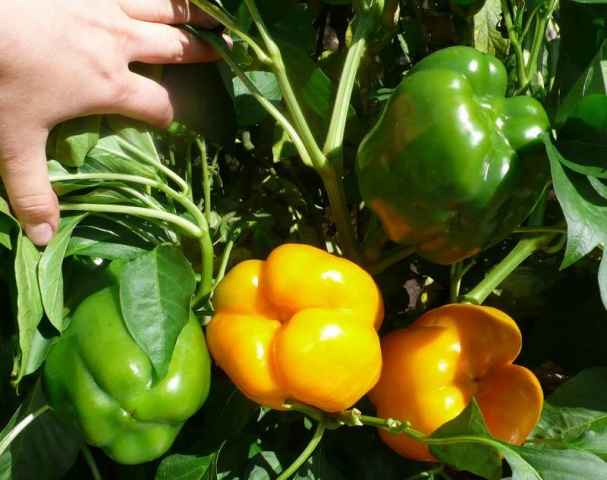
Queen. Medium early variety, ripening period 110 days, dominant dark red color. A hybrid with a pericarp of a centimeter thick, capable of simultaneously growing up to 12 peppers on a bush. It gives up to 8 kg per sq. m, but you can improve the performance if you remove the peppers in a state of ripeness.
Shorokshary. In open ground, it is grown only in the middle lane and southern regions. Walls from 6 to 8 mm, however, everything redeems the yield of a variety that can produce up to 4.5 kg from a bush. Orange-red color, disease resistance and excellent taste.
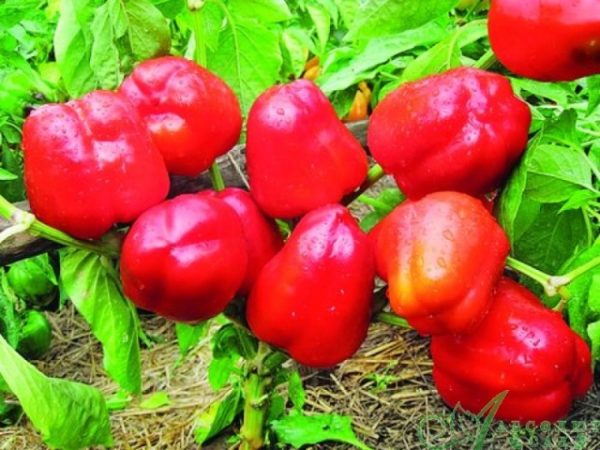
Reviews
Nikolai Pavlovich, 46 years old. Cherkessk:
“A neighbor in the country advised us to plant Atlant pepper. He planted and did not lose. The fruits are very fleshy, large and tasty. Now I will grow such a variety every year. ”
Alina Kazbekovna, 56 years old. Baku:
Planted a variety of Hercules. Everything is growing well in our climate, but this pepper surprised me. The vegetable turned out to be very tasty and fruitful. Now, neighbors in the country are going to grow the same pepper in their area.
Mikhail Artemovich, 65 years old. Pavlodar:
I have been cultivating various varieties of pepper for a long time, as the whole family loves this vegetable. Last year, I planted Queen pepper. Pepper developed rapidly and yielded crops earlier than other varieties. The crop productivity pleased. This year I also plan to grow this variety.




 Calorie pepper stuffed with meat and rice - BZHU per 100 grams
Calorie pepper stuffed with meat and rice - BZHU per 100 grams Gorky pepper - the best varieties for open ground
Gorky pepper - the best varieties for open ground Hot pepper seeds - the best varieties for open ground and reviews
Hot pepper seeds - the best varieties for open ground and reviews Capsicum tincture for hair - how to use and reviews
Capsicum tincture for hair - how to use and reviews